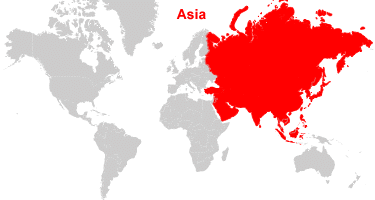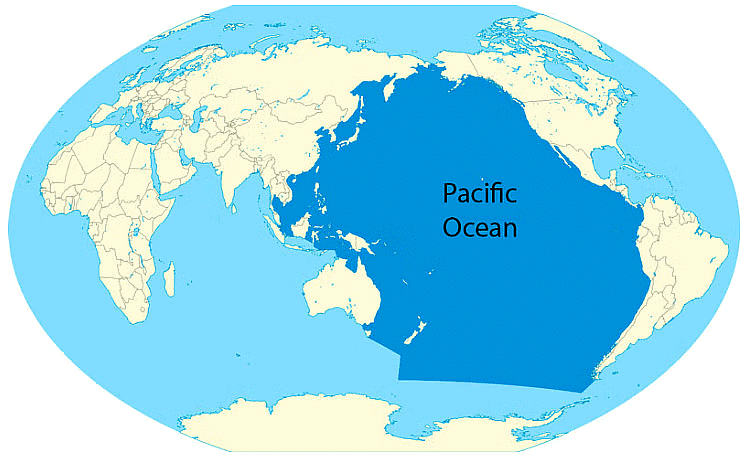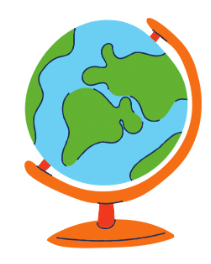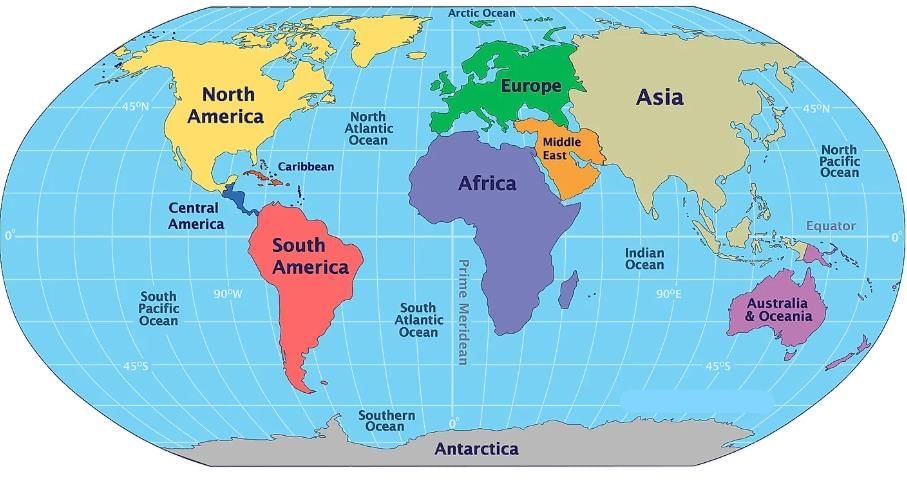The Earth- Oceans and Continents - 1 Class 3 Worksheet SST
| Table of contents |

|
| Multiple Choice Questions (MCQs) |

|
| Fill in the blanks |

|
| True or False |

|
| Match the following |

|
| Label the World Map |

|
| Short Answer Questions |

|

Multiple Choice Questions (MCQs)
(i) The Earth rotates from the west towards ________.
(a) North
(b) South
(c) West
(d) East
Ans: (d)
The Earth rotates from the west towards east.

(ii) Which is the largest continent on earth?
(a) Africa
(b) Asia
(c) Australia
(d) Europe
Ans: (b)
Asia is the largest continent and Australia is the smallest continent.

(iii) The air that we breathe comes from
(a) Sun
(b) Water
(c) Oxygen
(d) Atmosphere
Ans: (d)
The air that we breathe comes from the atmosphere, which is a blanket of air that surrounds the Earth.
(iv) Which ocean takes up about half of the earth’s surface?
(a) Atlantic
(b) Indian
(c) Pacific
(d) Arctic
Ans: (c)
Holding more than half of the Earth's open water supply, the Pacific Ocean was named by explorer Ferdinand Magellan in 1520, who called this body of water "pacific," due to the calmness of the water at the time.
 Pacific Ocean
Pacific Ocean
(v) One rotation of the earth takes a period of
(a) 12 hours
(b) 24 hours
(c) 6 hours
(d) 18 hours
Ans: (b)
The earth takes about 24 hours to complete one rotation around its axis. The period of rotation is known as the earth day.
Fill in the blanks
(i) A model of the earth is called a _______.
(ii) A book of small maps is called an _______.
(iii) A _______ is a drawing of a part or whole of the earth.
(iv) A _______ is used to find directions.
(v) The needle of a compass always points to find _______ direction.
Ans:
(i) A model of the earth is called a globe.
 Globe(ii) A book of small maps is called an Atlas.
Globe(ii) A book of small maps is called an Atlas.
(iii) A map is a drawing of a part or whole of the earth.
(iv) A compass is used to find directions.
 (v) The needle of a compass always points to find north direction.
(v) The needle of a compass always points to find north direction.
True or False
Write T if the statement is true and F if it is false.
There are five oceans on Earth. _____
Europe is bigger than Asia. _____
A revolution is when Earth goes around the Sun. _____
The Pacific Ocean is smaller than the Arctic Ocean. _____
The Sun helps keep Earth warm so life can exist. _____
Answers:
There are five oceans on Earth. T
Explanation: The oceans are Pacific, Atlantic, Indian, Southern, and Arctic—five in total.Europe is bigger than Asia. F
Explanation: Asia is the largest continent, much bigger than Europe.A revolution is when Earth goes around the Sun. T
Explanation: Earth makes one full trip (revolution) around the Sun every year.The Pacific Ocean is smaller than the Arctic Ocean. F
Explanation: The Pacific Ocean is the largest ocean, while the Arctic is the smallest.The Sun helps keep Earth warm so life can exist. T
Explanation: Sunlight and heat from the Sun make Earth’s temperature right for plants, animals, and people.
Match the following

Ans:
Label the World Map
On the blank map, colour each continent in a different colour and label them: Asia, Africa, North America, South America, Antarctica, Europe, Australia.World MapAns:

Short Answer Questions
(i) Name three factors that have made life possible on earth.
Ans: Factors responsible for life on earth are:
- presence of water
- suitable atmospheric condition
- presence of oxygen
- correct amount of sunlight
(ii) What is an orbit and what is its shape?
Ans: An orbit is a regular, repeating path that one object in space takes around another one. An object in an orbit is called a satellite. A satellite can be natural, like Earth (or) the moon (or) like some other planets also. Orbits come in different shapes. All orbits are elliptical, which means they are an ellipse, similar to an oval. For the planets, the orbits are almost circular.
(ii) Distinguish between rotation and revolution.
Ans: "Rotation" refers to an object's spinning motion about its own axis. "Revolution" refers to the object's orbital motion around another object. For example, Earth rotates on its own axis, producing the 24-hour day. Earth revolves about the Sun, producing the 365-day year.
 Rotation and Revolution
Rotation and Revolution
(iii) Define ocean.
Ans: A very large body of water is called an ocean. The four main oceans of the world are the Pacific ocean, the Atlantic ocean, the Indian ocean and the Arctic ocean. The Pacific Ocean is the largest ocean and the Arctic Ocean is the smallest ocean.
(iv) How many continents are there?
Ans: There are a total of 7 continents they are Asia, Africa, North America, South America, Europe, Australia, and Antarctica.
FAQs on The Earth- Oceans and Continents - 1 Class 3 Worksheet SST
| 1. What are the five oceans on Earth? |  |
| 2. How are continents different from oceans? |  |
| 3. What is the largest ocean on Earth? |  |
| 4. Are continents and oceans static or constantly changing? |  |
| 5. How do oceans impact the Earth's climate? |  |




















